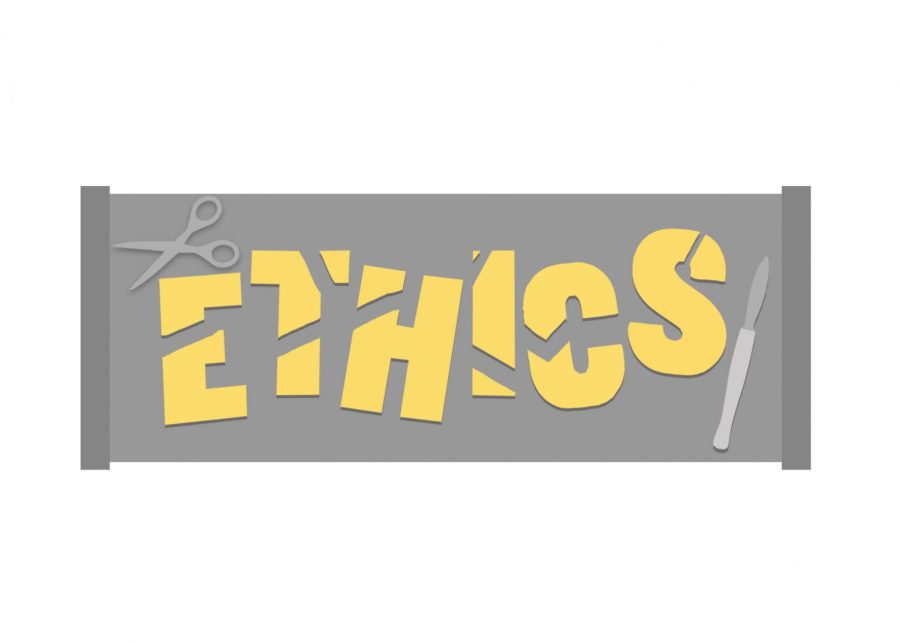Dissections — where to cut the line?
Students and teachers should consider the ethical consequences of dissections, especially regarding animal welfare.
March 1, 2019
It may seem like there is no such thing as “too far” when it comes to providing learning tools for students. Dissections, however, may tread that line. Dissections allow students to engage in hands-on learning, helping them visualize organs and body parts more effectively, as well as see whether a career in science is right for them. Nevertheless, students and teachers should consider the ethical consequences of dissections, especially regarding animal welfare.
At Lynbrook, physiology teacher Jason Lee tries to give his students as many academic opportunities as he can by incorporating dissections into his lessons.
“Here at school, I am thinking about my students’ education and the course in terms of opportunity and knowledge, and there is currently nothing that can replace [dissections] that is economically feasible,” Lee said. “It’s not to say that ethics of animals and knowledge and experience for students are mutually exclusive.”
Like Lee, many of the students feel that dissections are educational; however, students must also be aware of the how the animals are obtained.
“I think dissections are cruel at times, but they are very helpful and beneficial to learning since they are an application of what we are learning in class,” said senior Sandy Matsuda.
According to Last Chance for Animals, an animal advocacy non-profit organization, six million animals such as cats, dogs, fetal pigs and frogs are killed for dissections or other educational purposes every year in the U.S. Many of these animals come from various sources, such as slaughterhouses, animals shelters, farms and breeders and are then sold to biological supply companies, from which educators may purchase specimens. Specimens are also products of industries like the food industry or come from laboratories where they have been used as experimental subjects.
On farms, animals are often subjected to inhumane conditions. According to the Socially Responsible Agricultural Project, farm animals are forced to live on concrete in their own excrement. They are unable to access fresh air or natural light. On top of being confined to tight living spaces, animals may face painful practices such as tail docking, dehorning and debeaking without anesthesia or pain relief. The demands of animal production further lead breeders to force animals to continuously produce offspring, causing strain on animals’ bodies and a higher death rate of these animals.
According to People for the Ethical Treatment of Animals (PETA), some suppliers violated the Animal Welfare Act, a law regulating the treatment of animals in research and requires that the minimum standard of care and treatment be provided for animals bred for commercial and research use. These violations include removing animals from gas chambers and injecting them with formaldehyde without checking them for vital signs. Formaldehyde, a chemical used by several companies for the preservation of specimens to be dissected, is an irritating caustic chemical that causes painful death for animals. Formaldehyde should only be injected after death; injecting the chemical into animals before they have died causes animals to suffer.
In addition to harming animals, dissections pose health risks to students. Formaldehyde has been identified as a possible carcinogen, meaning it can cause throat and lung cancer. According to the Agency for Toxic Substances and Disease Registry, formaldehyde has been reported to cause drowsiness, headaches and irritation of the eyes, throat and nose.
In order to attain the same benefits that dissections provide while protecting both students’ health and the environment, teachers can look to virtual dissections and online simulations and labs. The Whole Frog Project, which offers virtual frog dissections, is one such alternative. The Whole Frog Project allows students to have an overview of what a dissected frog looks like along with the locations of each organ. Other virtual dissections, such as The Cow Eye Dissection, list out each step of a dissection, as well as a video for each step. There is the possibility that dissections can be replaced by virtual reality if such technology becomes more accessible, since it is currently still too costly to have virtual reality available at school. With technology continuously developing, it is quite possible that virtual reality can become a viable option in the future.
“It would be awesome to have virtual reality, but the one limiting factor is that it is still fairly early. I think it is definitely the route we want to go on eventually,” Lee said.
Although students are able to gain hands-on experiences that are currently unattainable with virtual reality and online simulations, there are many negative consequences to dissections. Until virtual reality becomes more viable, providing more online simulations to replace certain dissections may lower the risks that students face and decrease our use of specimens. While dissections are an important learning tool, they are not worth sacrificing the lives of millions of animals and the health of our students when safer alternatives such as online simulations are available.





































































